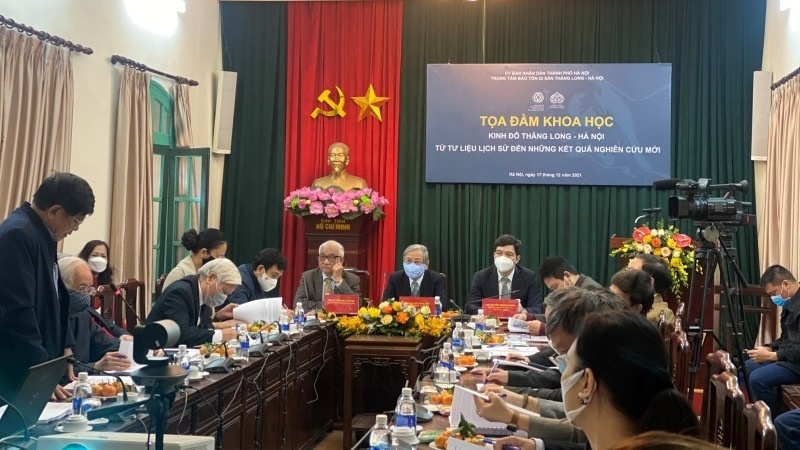The seminar was aimed at publishing the new research results on the Thang Long Imperial Citadel; discussing, exchanging and sharing the experiences of experts and researchers; and contributing to the restoration of important architectural works in the Thang Long Imperial Citadel.
The seminar focused on two main contents: Thang Long – Hanoi capital from documentation to interpretation of relics, and Interpreting images in the journey to promote heritage values.
The seminar also contributed to additional sources of materials to learn and determine the function of the Kinh Thien Main Hall area before the early Le dynasty, the vestiges of the Ly dynasty – the founding era of Thang Long, and the Tran dynasty – the period of succession and development of Thang Long, as well as provided scientific evidence for the research process of architectural works in Thang Long Imperial Citadel, specifically the Le period, regarding architectural materials and architectural structures.
In which, the scientists asserted: Exploratory excavations have clarified a part of the space structure of Kinh Thien Main Palace in the early Le and Le Trung Hung (Restored Le) dynasties, which will act as an important database for the restoration of Kinh Thien Main Hall in the near future.
In recent years, the research and interpretation of Thang Long – Hanoi has been focused and approached from many angles. In particular, new results on archaeology have been contributing to the identification of the structural plan of the Kinh Thien Main Hall, thereby further clarifying the core values of the heritage site and serving the conservation and promotion of heritage values.
Director of the Thang Long – Hanoi Heritage Conservation Centre Nguyen Thanh Quang shared that the results of excavations and archaeological research in the 10 years since the Thang Long Imperial Citadel was recognised as a World Cultural Heritage have brought many new discoveries, providing further important scientific documents in the study of Thang Long capital.




